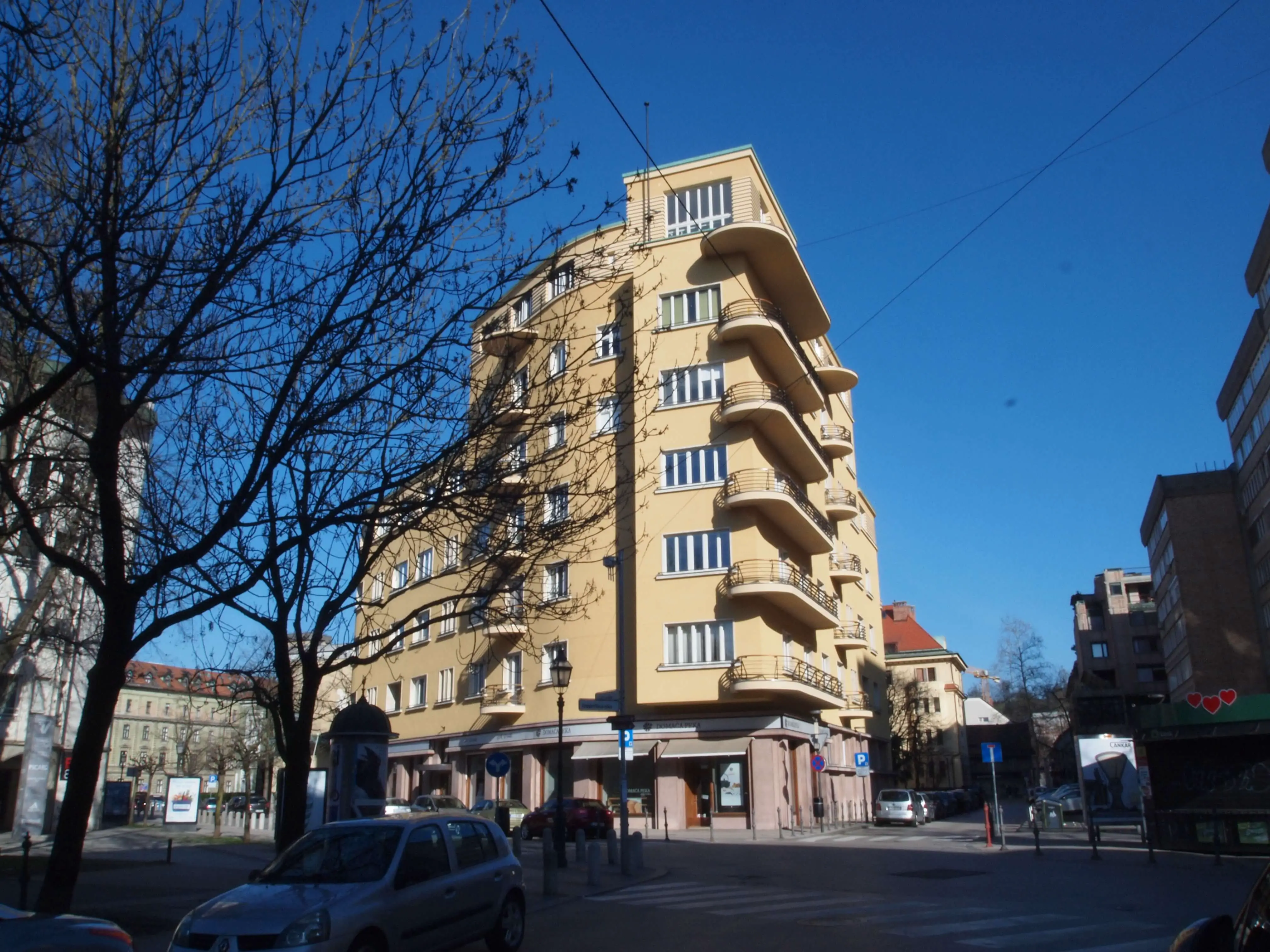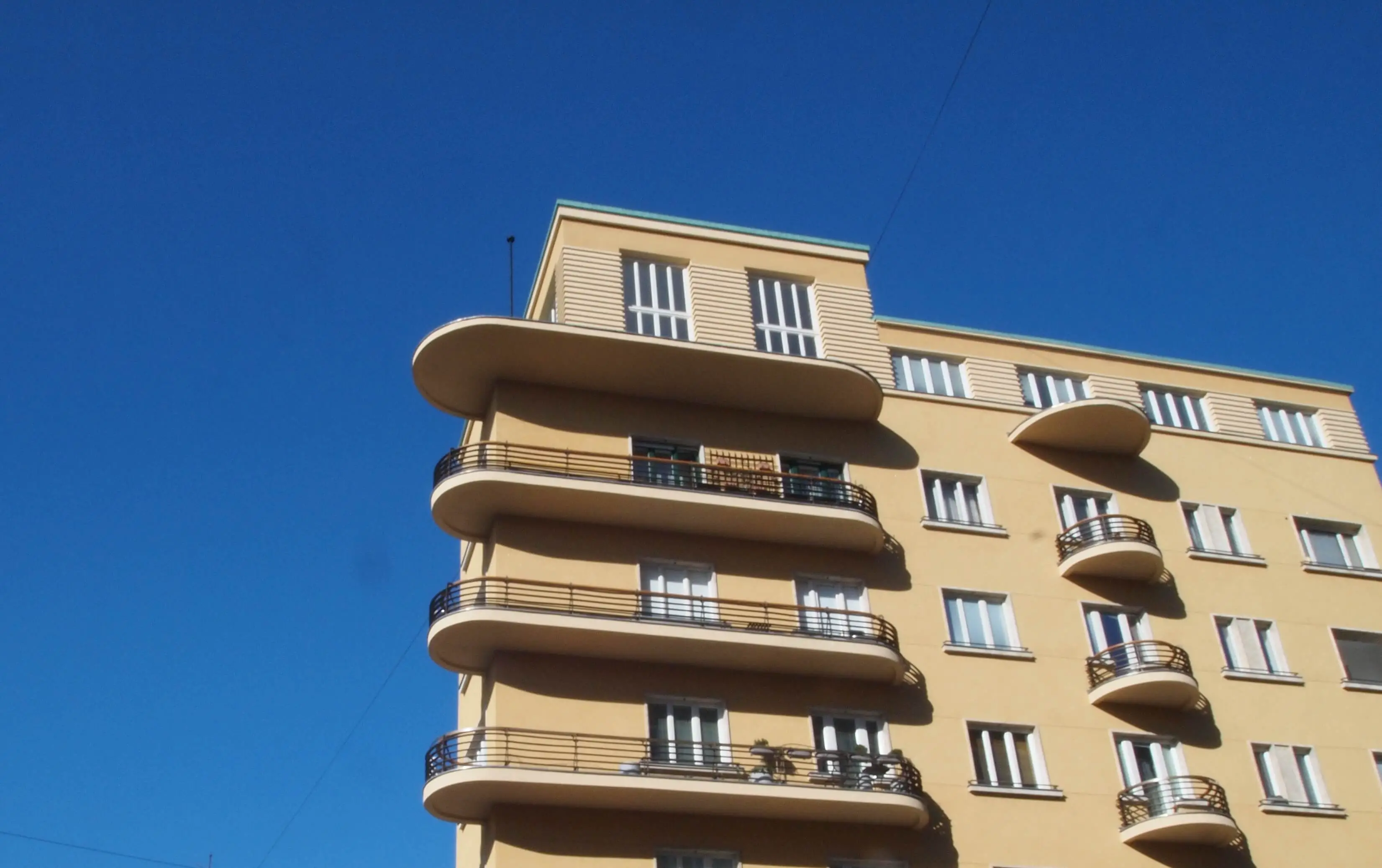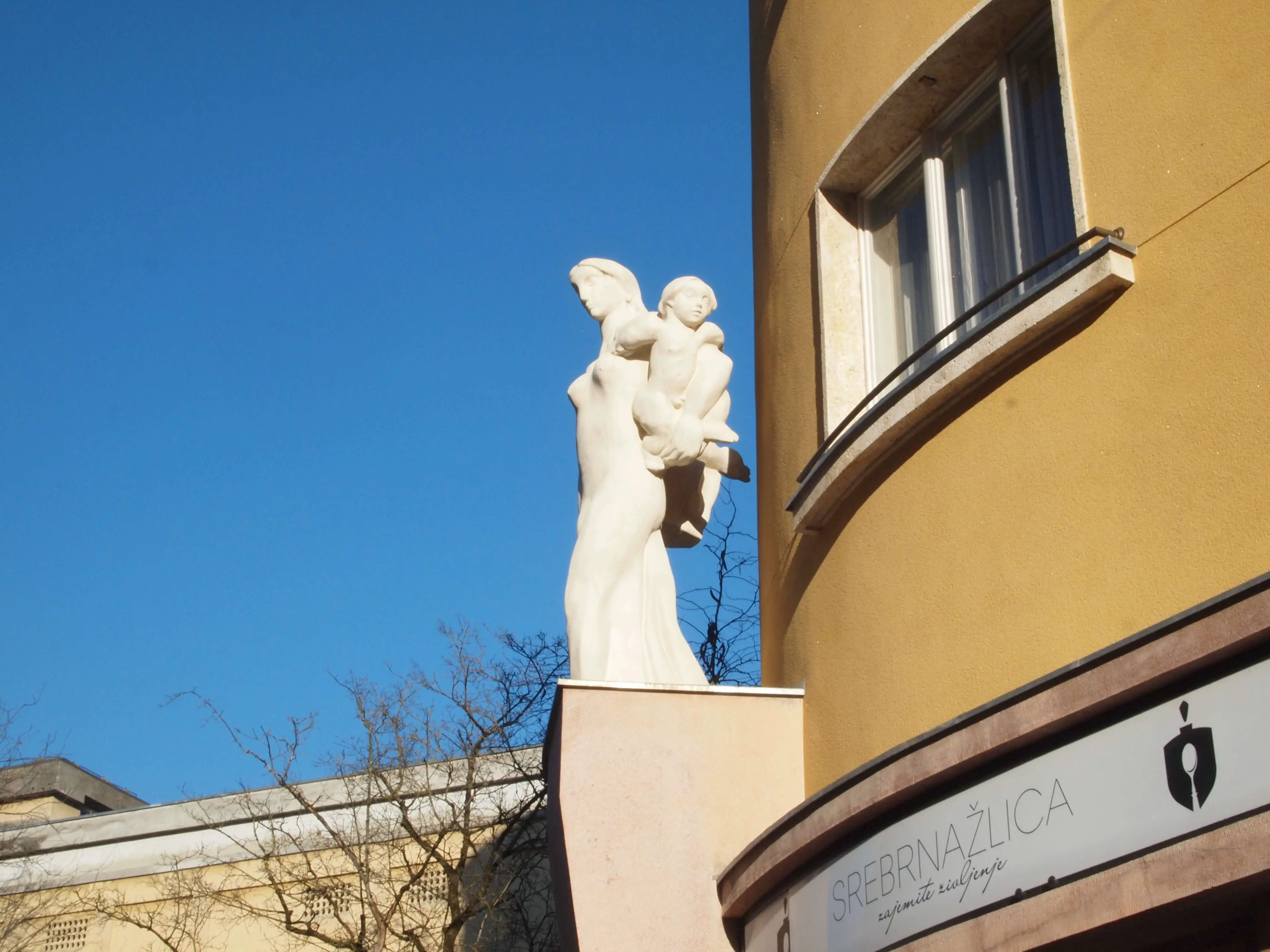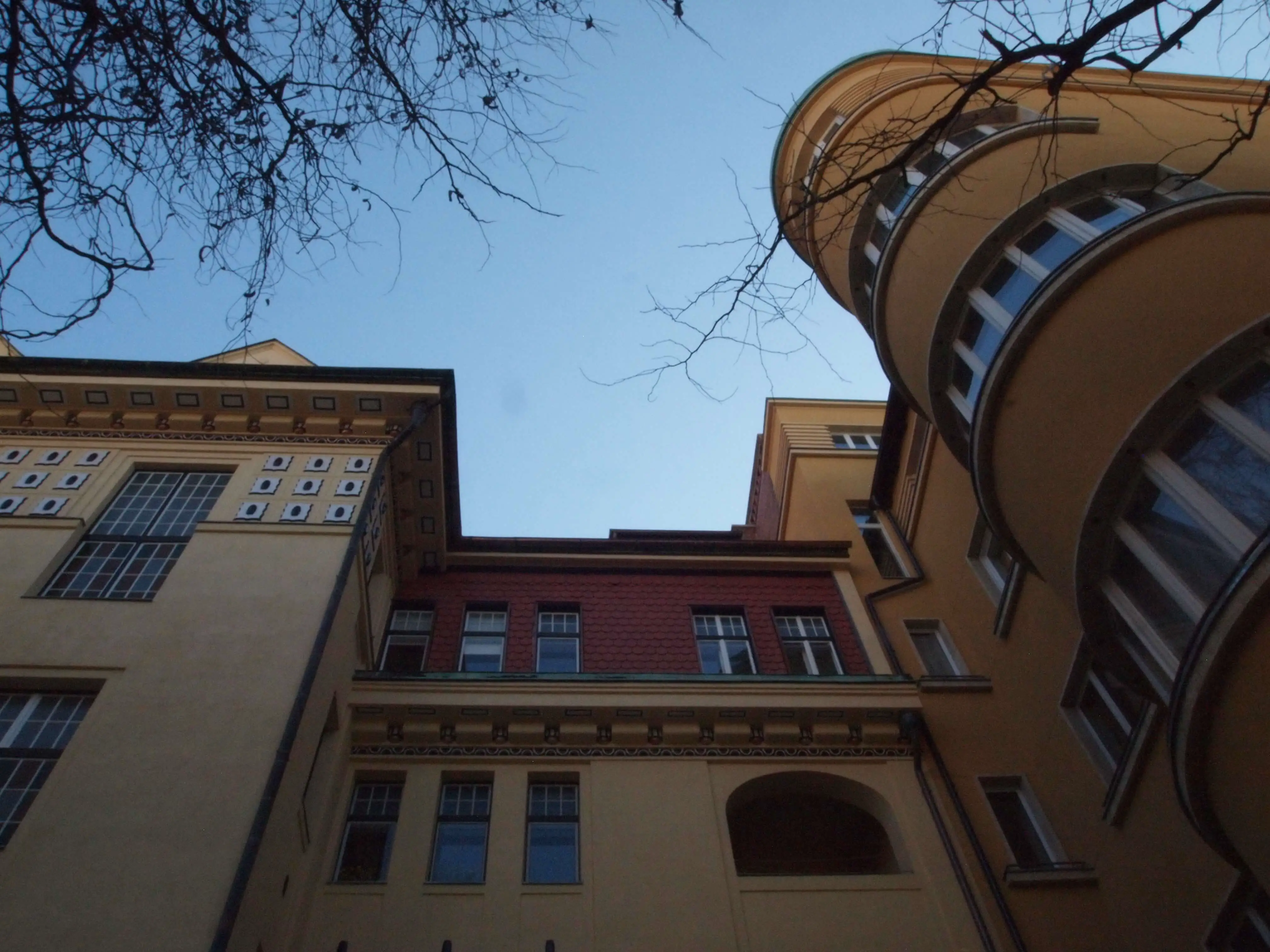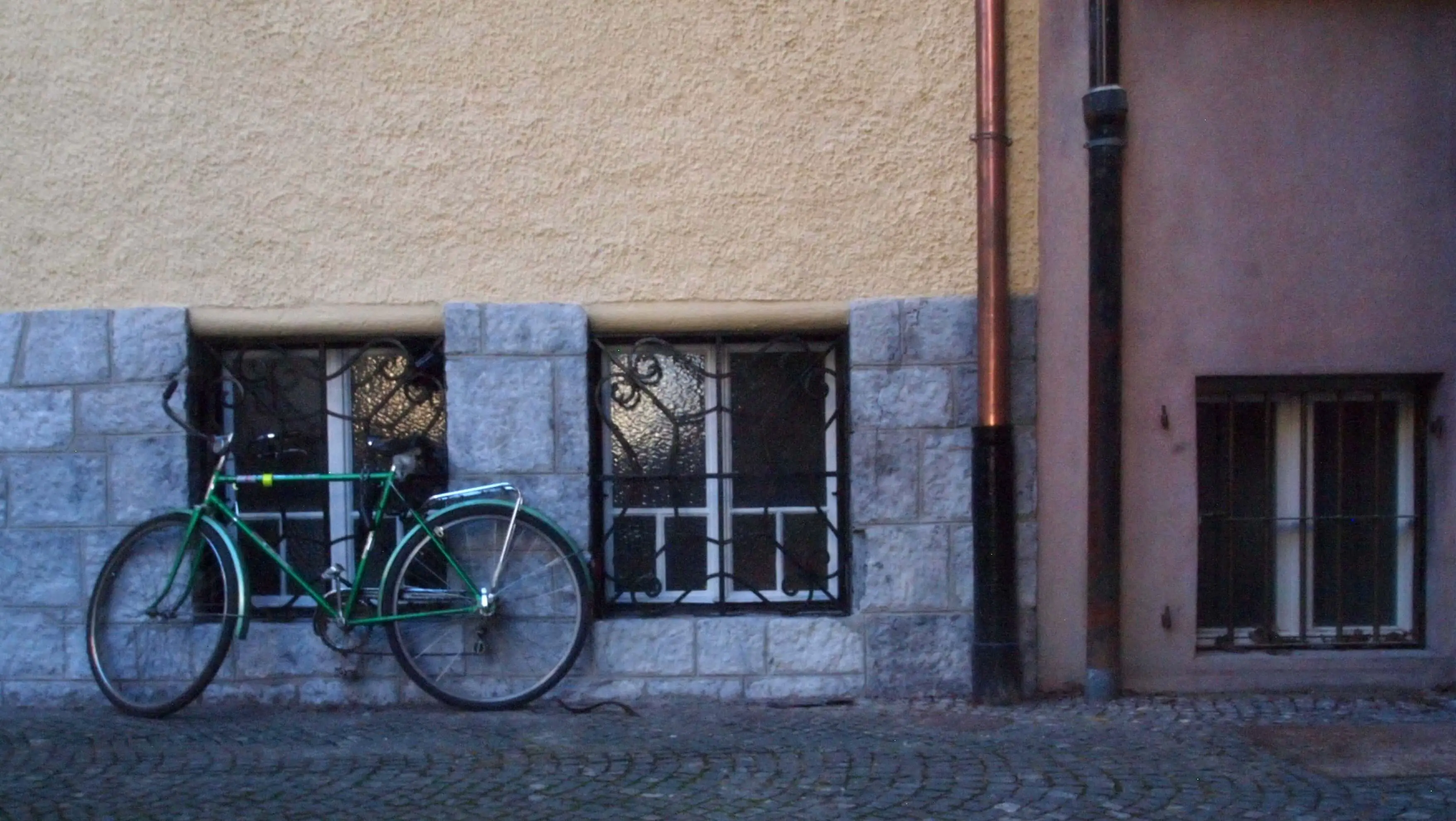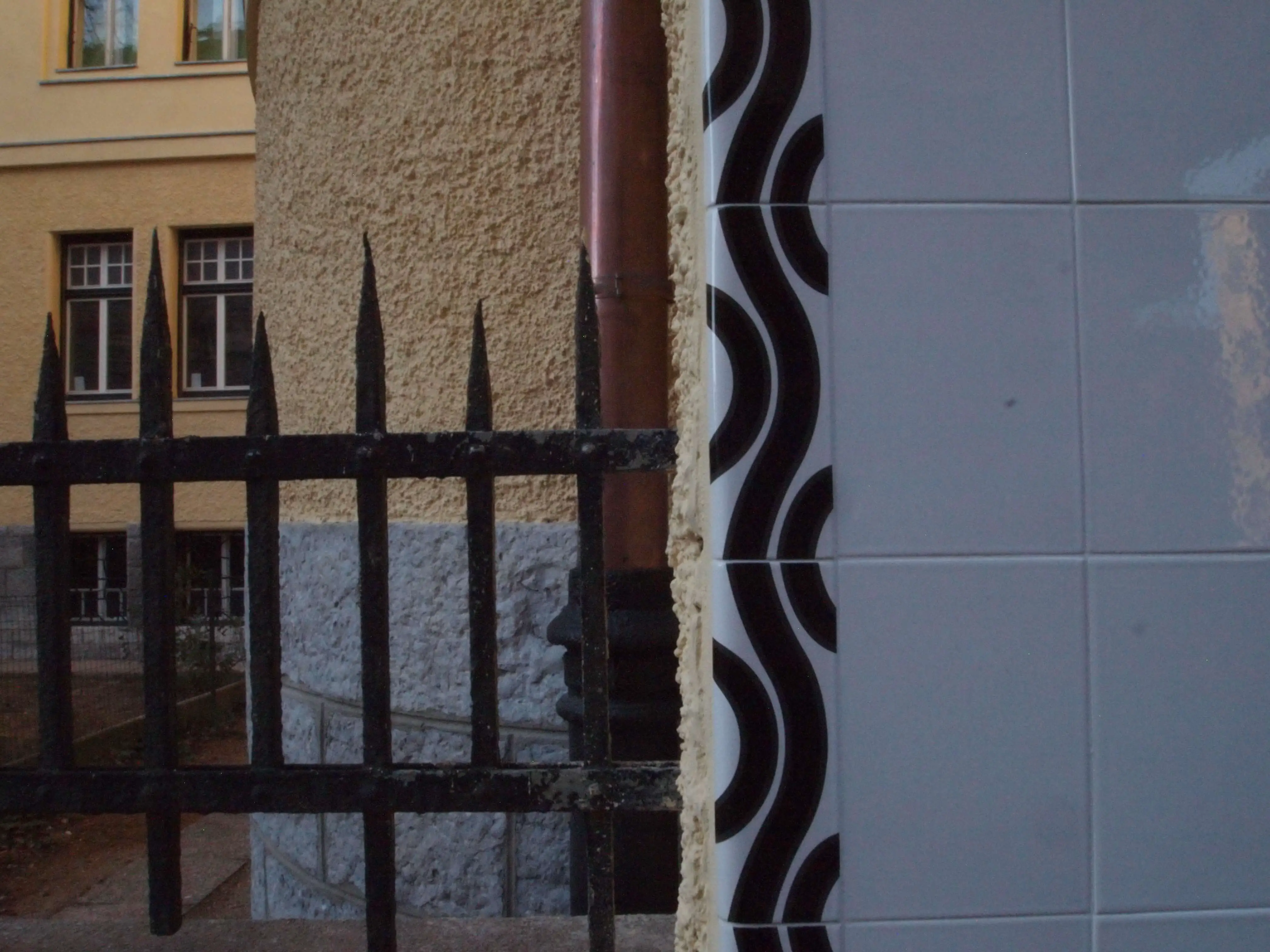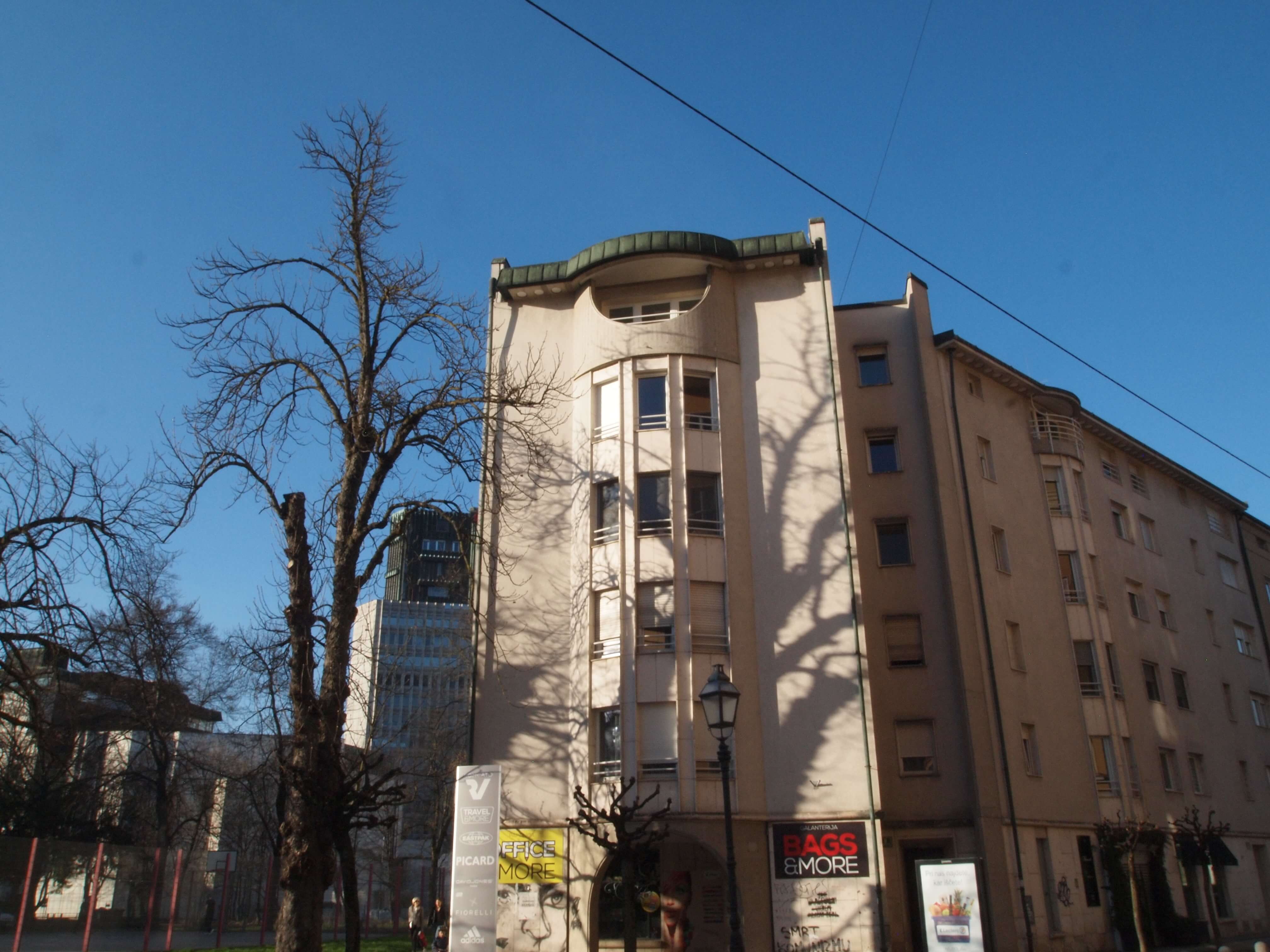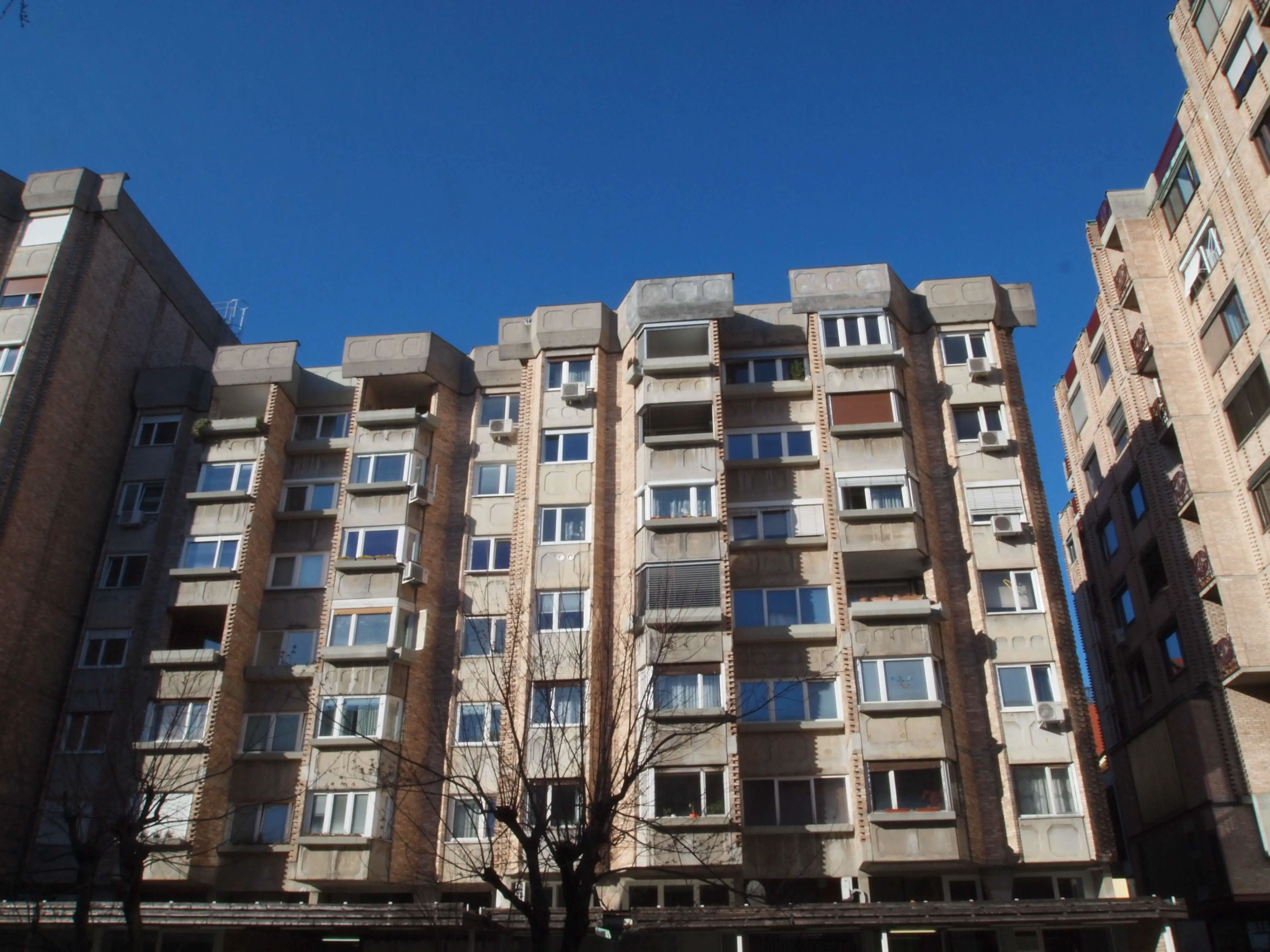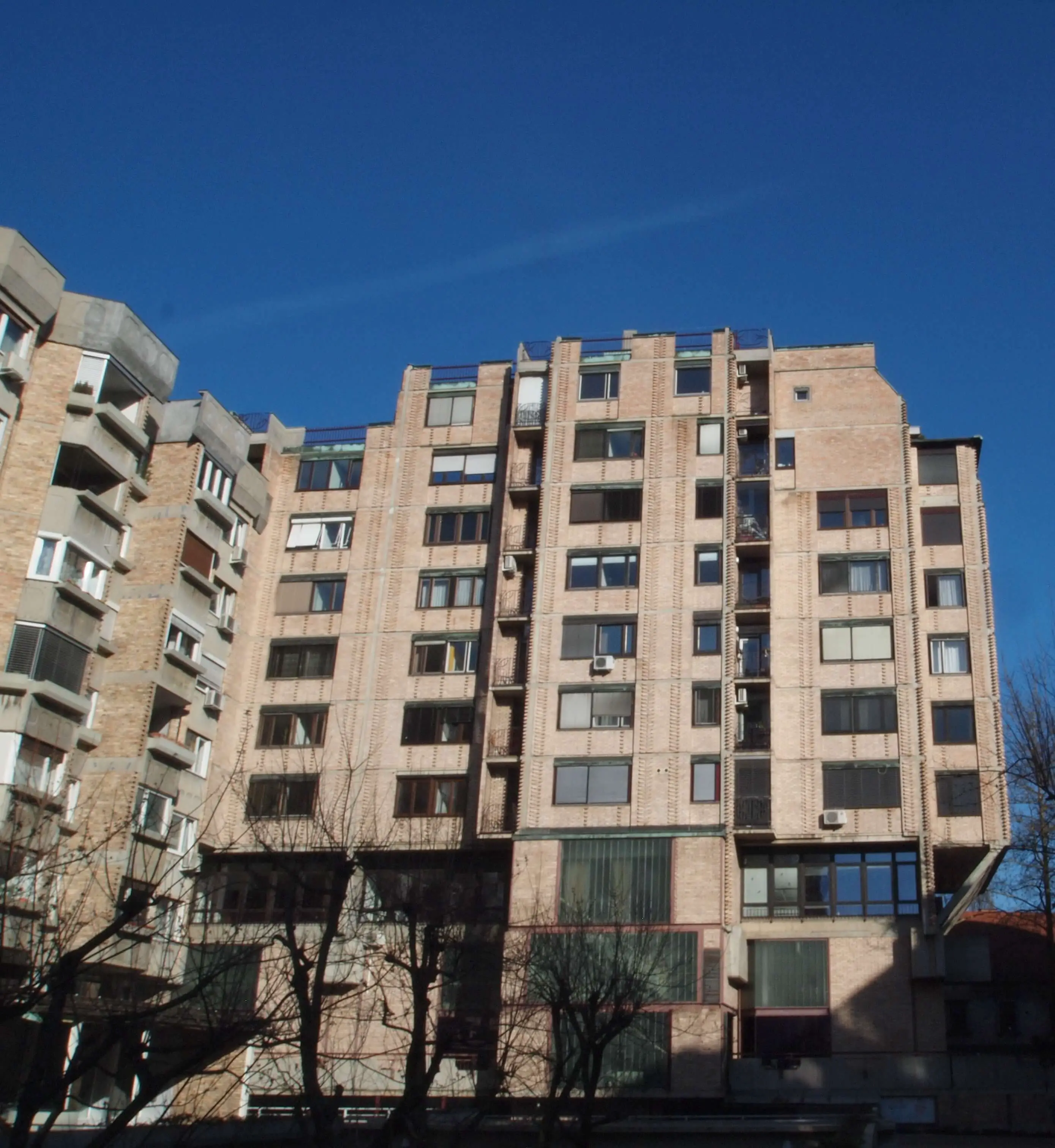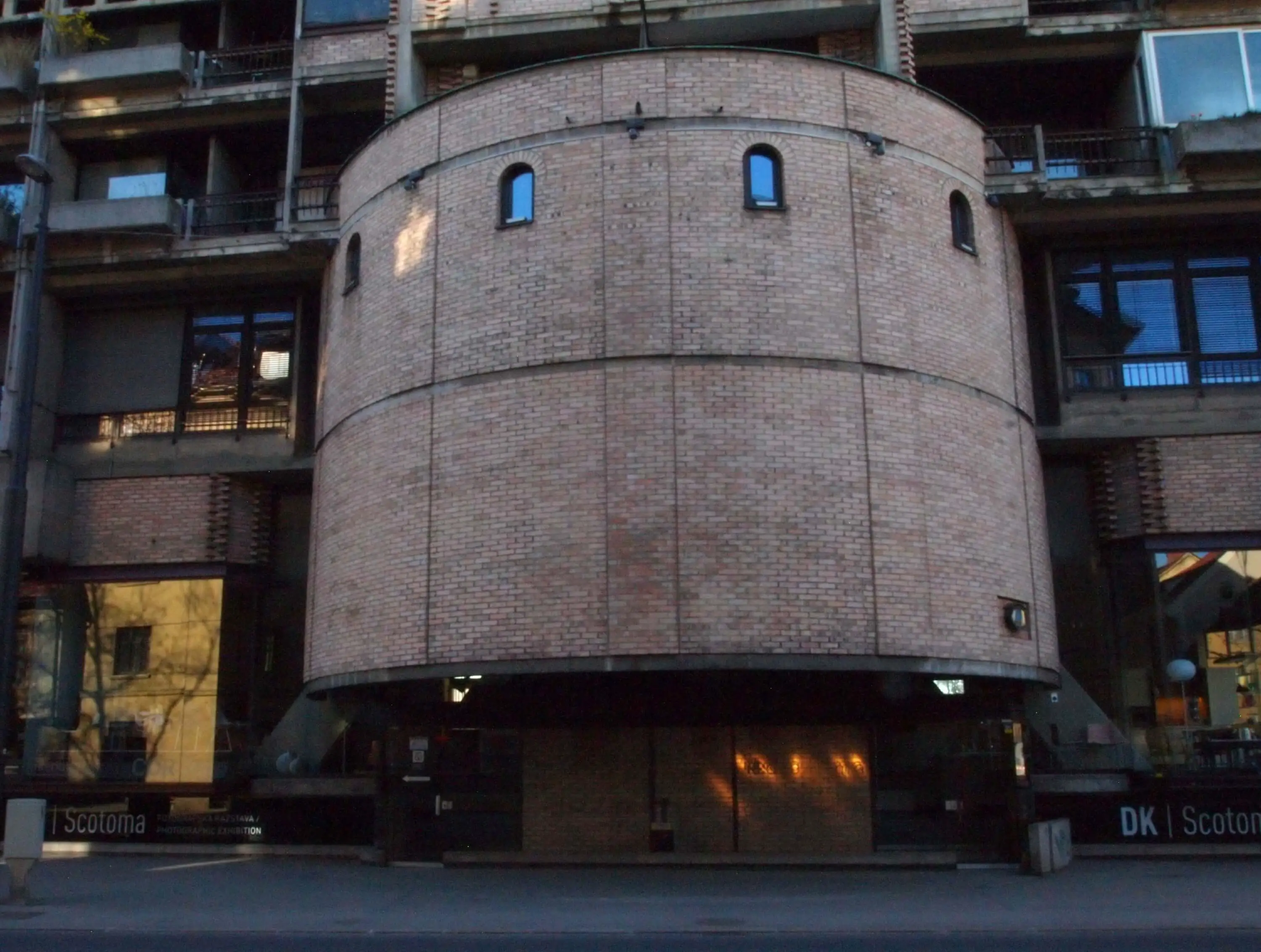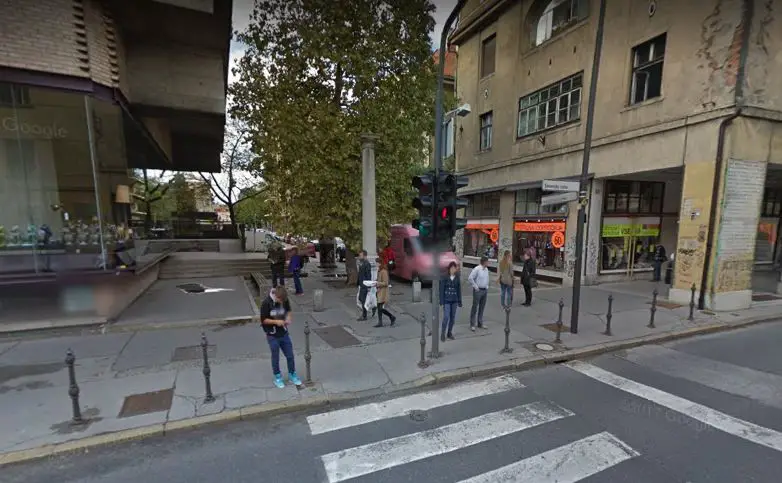Ljubljana related
This week's photo is of of Cobbler's Bridge / Shoemaker's Bridge / Cevljarski most, one of the prettiest in Ljubljana, and - as you might be able to guess from the columns - another of Jože Plečnik's contributions. Note that this view comes from Fishmarket Footbridge, a more recent and easy to miss structure between Shoemaker's and the Triple Bridge, but a structure that's one of the best photo spots in town.
It comes to us from Xenia Guzej, who lives and works in Ljubljana and shares her love of the city on Instagram, with a page called ljubljanamylove, where you can also find this earlier picture of the week, showing the bridge in another season.
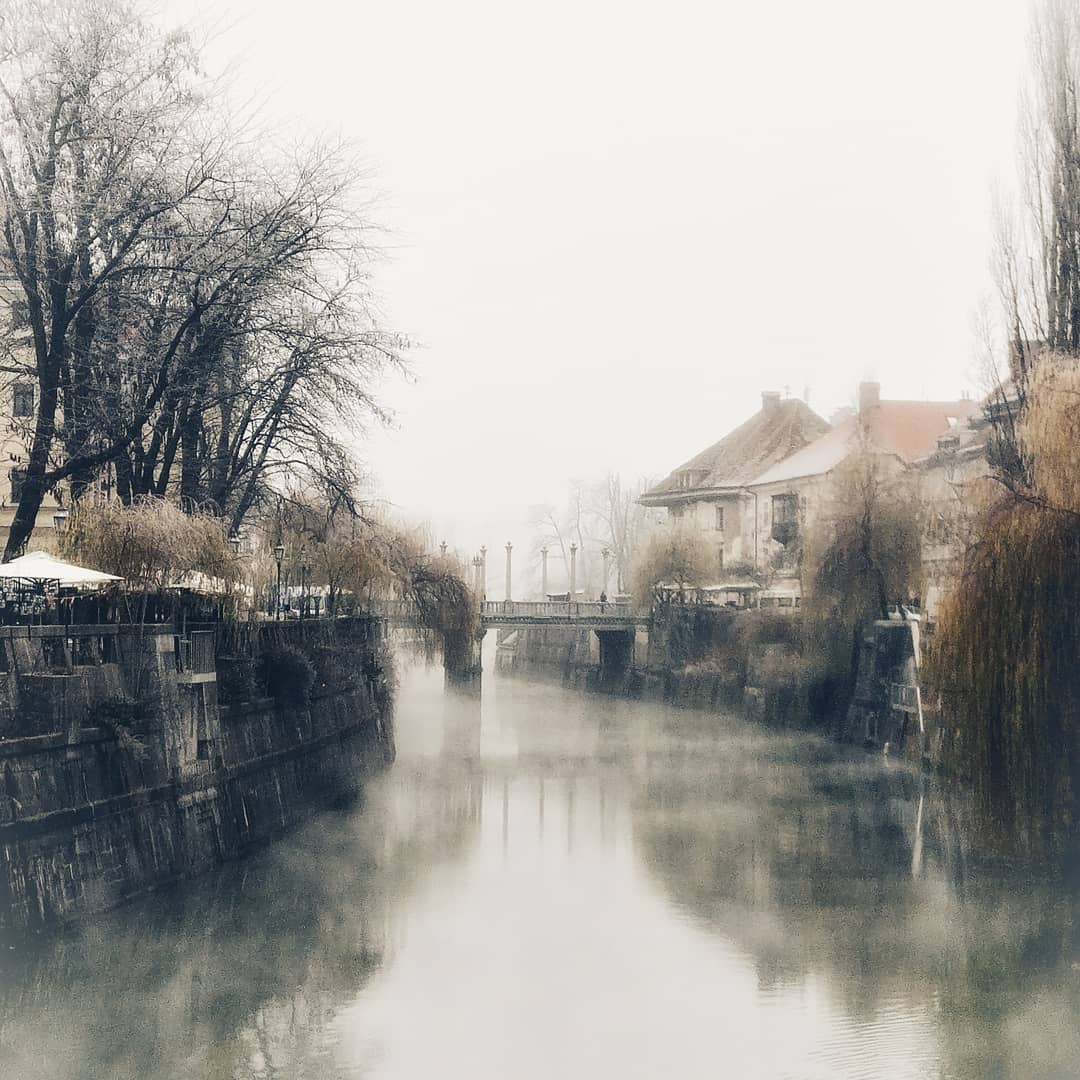
A little while ago I wrote about a wonderful guidebook to the capital, Let’s See Ljubljana… Beyond its utility and charm, it’s a book that means a lot to me personally, because when I first arrived in Slovenia and was hit by culture shock and disorientation, after almost two decades in the 24/7/365 neon glare of Asia, it gave me a way into the quiet town of Ljubljana through reliable landmarks that had stood the test of time and would serve as anchors for my new life
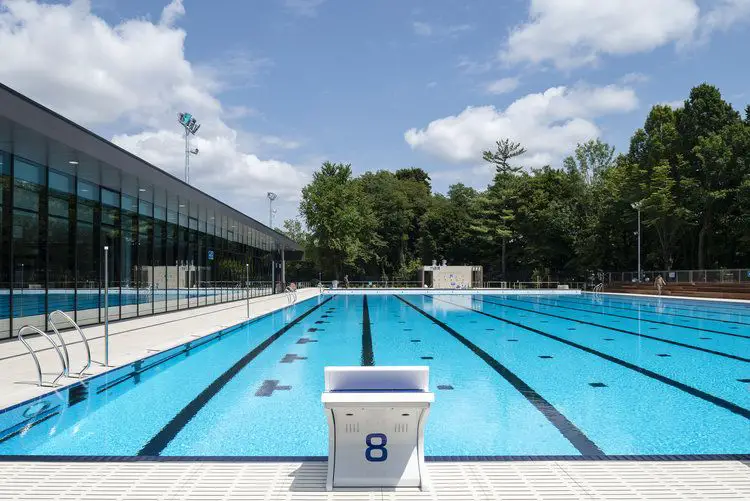
Swimming pool, Kolezija, Ljubljana. Designed by Ravnikar- Potokar. Photo: Virginia Vrecl
I adopted the pen name JL Flanner because it was slightly more subtle than LJ Flâneur, but the intent and belief remained. If I gave myself up to the city then I’d be rewarded somehow, even if just with a better sense of place and a clearer understanding of my surroundings. So when I got the chance to meet one of the authors, Robert Potokar – the other being his partner in life and work, Špela Kuhar – I jumped at it, both to express my gratitude and to see what else I could learn. It was a meeting that exceeded all expectations.
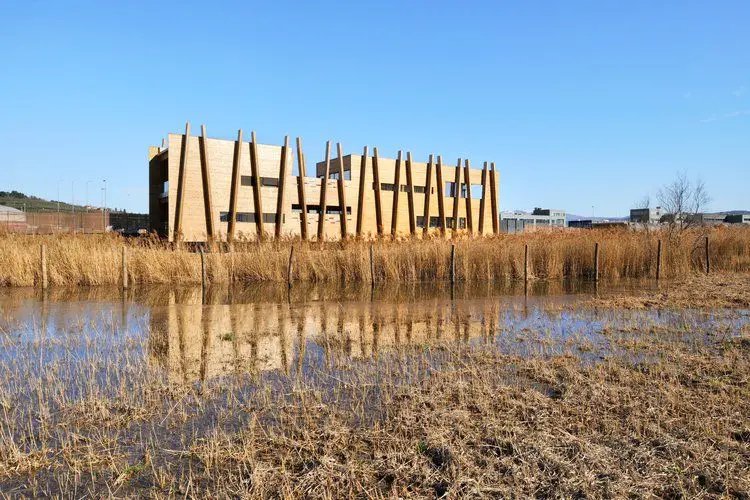
Buildings in Nature Reserve Škocjanski Zatok, Koper. Designed by Ravnikar- Potokar. Photo: Virginia Vrecl
Robert and Špela work Ravnikar - Potokar, and fans of architecture will recognise that second name, although note that this Ravnikar isn’t directly related to Edvard, the student of Plečnik who also left a considerable mark on the Slovenian capital. Edvard Ravnikar’s most visible work in Ljubljana is the complex in Republika trg, but his work there stretches out beyond this monumental landmark, and is easily spotted if you’re familiar with some of his recurring motifs, like the brickwork patterns and copper roofs. It’s in one of these other buildings, just a short walk away, that Ravnikar - Potokar has its offices, and where I met Robert to thank him for his work. We had a long, undirected conversation, without interview questions and with a walk through the neighbourhood, and what follows is some of what I learned.
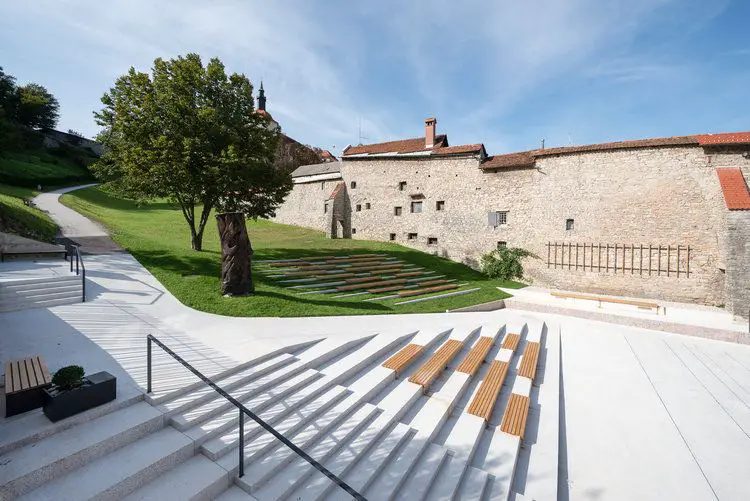
A Square and a Playground Under the Castle in Škofja Loka. Designed by Ravnikar- Potokar. Photo: Virginia Vrecl
On his books
I was born in Kranj, but I spent my childhood in Škofja Loka, which is my first love. I’ve also written a guidebook for the Gorenjska region, along with my wife, Špela Kuhar, going through all the important buildings. Traditional architecture, local architecture, churches, everything. An overview of the whole region. It was a lot of work, and people ask we if I’ll make another one, but, well, it’s a lot of work. You start a book and you think this will be a one year project. But then you go deeper, and it’s fractal, it just keeps growing, and if you don’t have a deadline it’s never-ending.
In between we succeeded in making make another guide to Ljubljana. But in general now we focus on the architectural magazine, Piranesi, and that’s OK. In our work, in architecture or life, we just make a few things, but I hope they are important.
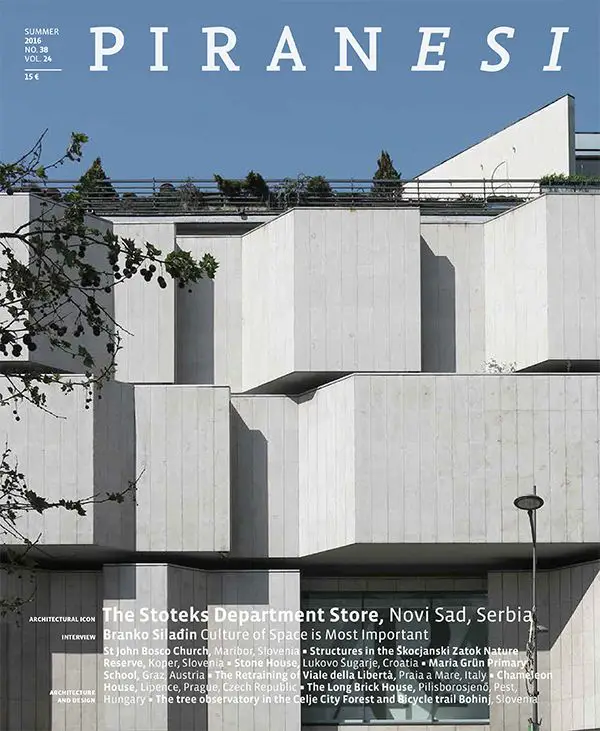
On Ljubljana
I like Ljubljana because it’s not too big, not too small, and it’s still the capital. If you know the advertisement which was on TV for the car Clio – it’s got everything a big one has.
When it’s possible and there’s enough time I walk to work from my home in Trnovo, going different ways and seeing what’s new, or new to me. Seeing people, seeing architecture. When I take people or tourists around the city we don’t only look at buildings, but also things that are nice or not so well known, and in this way they can remember the architecture better itself, and the way the city functions as an evolving whole, with different layers of history and use still present, even today.
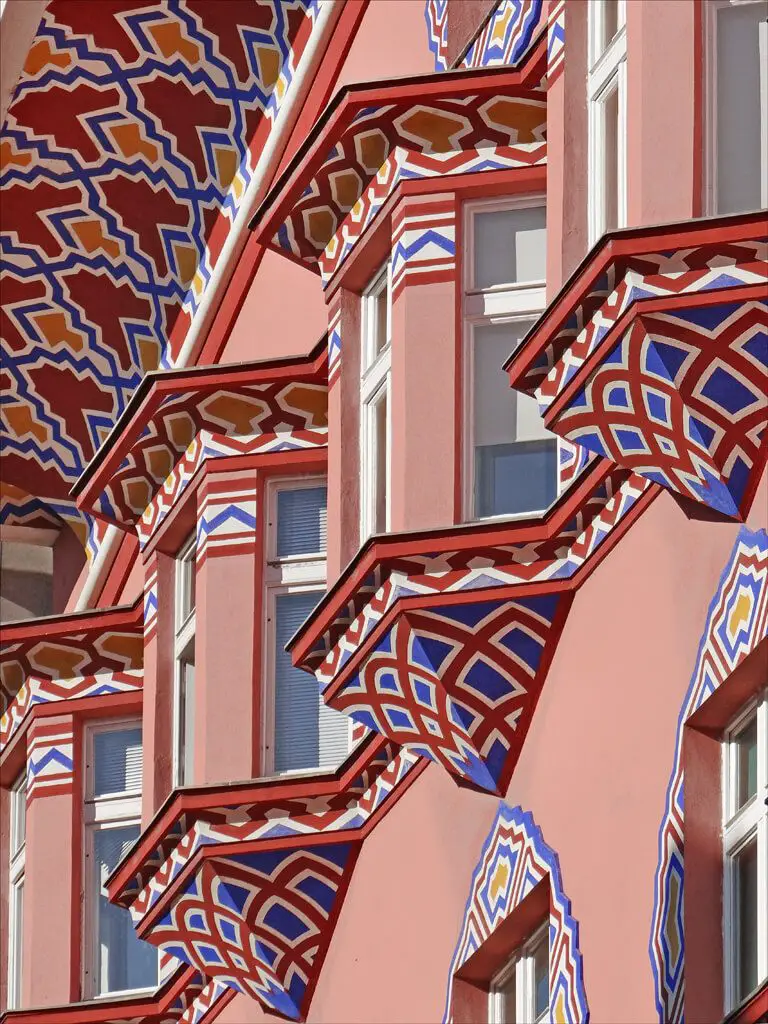
The Cooperative Business Bank Building on Miklošičeva. Flickr - Jean-Pierre Dalbéra CC-by-2.0
How things have changed
Do you know the Cooperative Business Bank Building on Miklošičeva? After the Second World War, during socialist times, people were like “come on, this is so ugly, all these decorative elements.” In the 50s, 60s, 70s, maybe even until the 90s, it was seen as nothing special. It was in bad repair and that kind of decoration was out of fashion. But after tourism developed it became one of the most notable and characteristic buildings. A building which is kept in our memory.
So it’s interesting how things change over time. When it was built it was important, and then for decades it was not, architects just didn’t like it.
It’s the same with Plečnik. It wasn’t until the big exhibition of his work, in 1986 in Paris, that he somehow came back to Ljubljana. It was a time of postmodernism, a boom in decoration, and that’s when he got rediscovered. You know, in the 60s and 70s people weren’t really taught about him at the Faculty of Architecture. I was there in the 80s, and we went to Paris to see that show and it was actually a surprise to see what he’d done.
Mali Nebotičnik
On his favourite building
My favourite in the city of Ljubljana is one just near here, on this street, Mali Nebotičnik (“Little Skyscraper” - see map here). It’s an example of modernist architecture, and in my opinion one of the best, from the 1930s. And not just here, but really in the world. In a way it’s so simple, but it fits the location perfectly and it’s got all typical modernist elements: curved lines as well balconies, railings, details and a sculpture by sculptor Tone Kralj. Modernism was known by adding sculptures on the façades. There are some other buildings like this in Ljubljana, such as at Argentinski Park, but this is the nicest. It’s not so well known, but it’s got really a lot of remarkable features, especially how it fits into the place, although the inside isn’t so special.
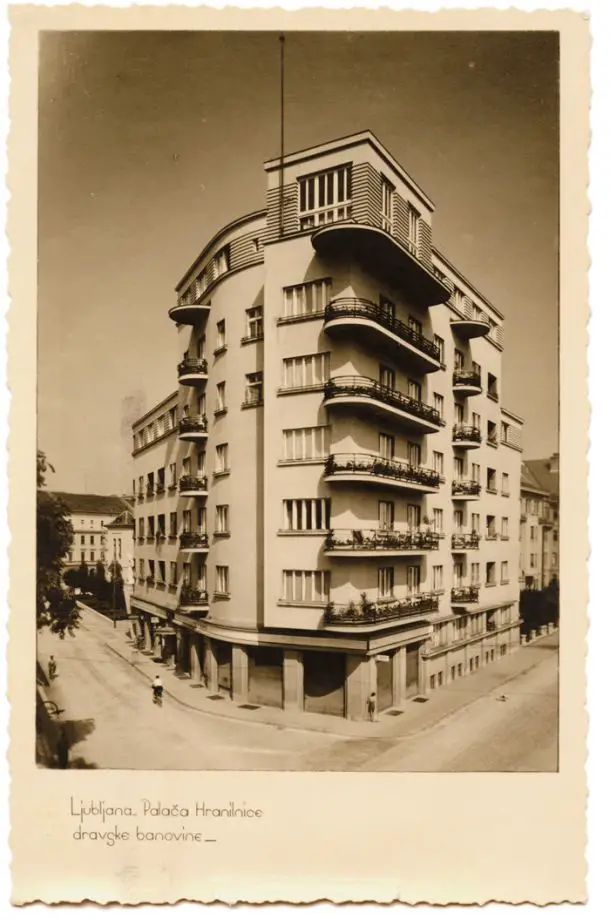
Postcard of Mali Nebotičnik (1930s? 40s?). Wikimedia, public domain
Because of its location, right in the centre, the people who bought apartments were rich, or artists. It was renovated just last year, and they did it very well, more or less the same colour as before, perhaps a little more vivid.
It wasn’t so out of fashion as Plečnik, because it isn’t so decorative, and in many ways not so different to socialist architecture, so aesthetically, ideologically, it didn’t have so many problems.
The lighting system for the store names is original, and really well done, with this style being common all over Europe in the 1930s, and even in Argentina, Buenos Aires. Curved balconies are very common, and the top floor is higher because there were studios inside.
If you look at the building next door, built by a German architect, I think, in around 1910, you can see how the architect of the Little Skyscraper (Herman Hus) understood the location, in urbanistic terms, and was able to integrate his work into the space.
If you look at this building here [see below], I think it was done in the 80s, and the architect tried to use some of the same elements, but it’s not as nice (although nothing is).
On Edvard Ravnikar
My late partner in this firm (Ravnikar – Potokar) was called Vojteh Ravnikar, but no relation to Edvard. In fact, the building we’re in now, part of the Ferantov vrt complex, is a Ravnikar, and I think it’s one of the nicest apartment buildings in Europe. Although these days it’s out of style, and people don’t really like the socialist architecture at the moment. That said, with the big MoMA exhibition of arhitecture in ex-Yugoslavia last year [Concrete Utopias], things are changing.
In some ways it’s less socialist and perhaps even “baroque”. These were quite prestigious apartments when they were built, with space for offices and stores at the bottom, a mixed use complex.
You can see how the shops come out of the floorplan, and this way gives more light to the apartments. If you look at the balconies they’re not at right angles, but diagonal, and this also gives more light and privacy. So the details are very well thought out, especially if you compare this to architecture that was done in Eastern Bloc at the same time, in the 1960s, it’s incredible, almost Scandinavian style.
Another very special thing about Ferantov vrt, which you can see from Slovenska cesta, is how Ravnikar somehow introduced the Roman form. Because here, underneath, there were the ruins of Emona – the Roman Forum. For example, there was a basilica, with an apse. So the architect decided to present this in the new structure, with this postmodern evocation of Ljubljana’s past.
There’s another detail, this column [see below, in a bad picture from Google Maps because there's nowhere to stand]. Originally the house where Plečnik was born was standing here. Of course, it was demolished, but then Ravnikar, a student of Plečnik, decided to put up this column in its place. So this column isn’t Ravnikar’s style, but it’s Plečnik’s.
Screenshot Google Maps
You can see some more of the buildings Robert and colleague have produced at his firm’s website, and if you’d like to ask about a private “walking workshop” to take you deeper into Ljubljana’s built environment, then you can email him at This email address is being protected from spambots. You need JavaScript enabled to view it.
Slovenia is a chocolate box of green, stunning landscapes, but I have a greater fondness for city than country, and a love of cool, clean lines as much anything organic. Thus this week your attention is drawn to the work of Igor Andjelić, of Ljubljana’s Gallery Minimal. A striking figure who takes striking photos, he’s been part of the city’s art scene for decades – including as part of IRWIN and NSK, as well designing, among other spaces, ŠKUC and Klub K4 – and has works in the collection of the Museum of Modern Art in New York (MOMA).
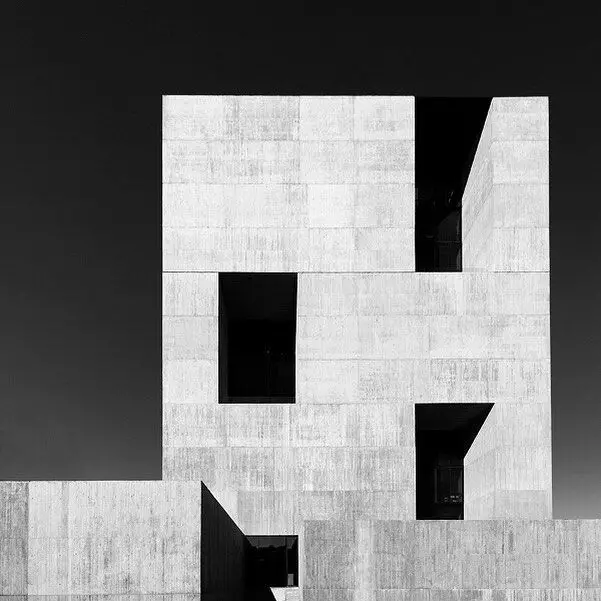
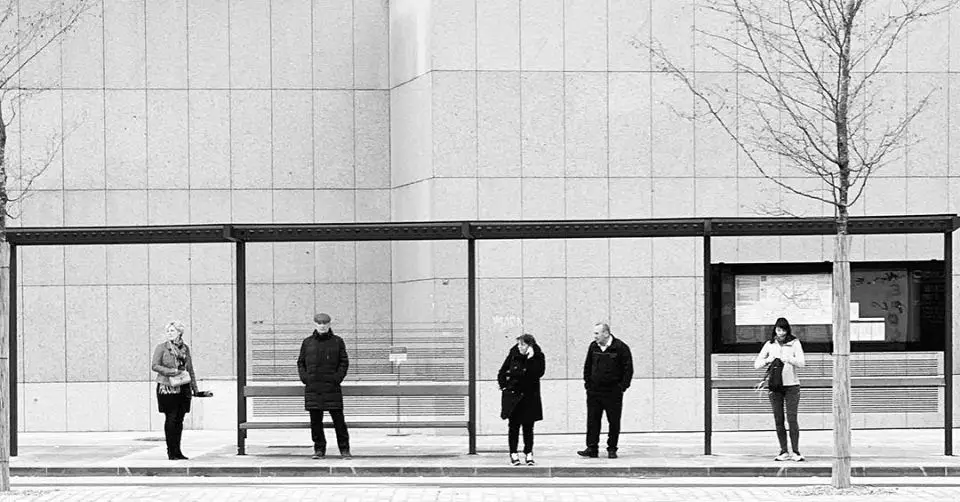
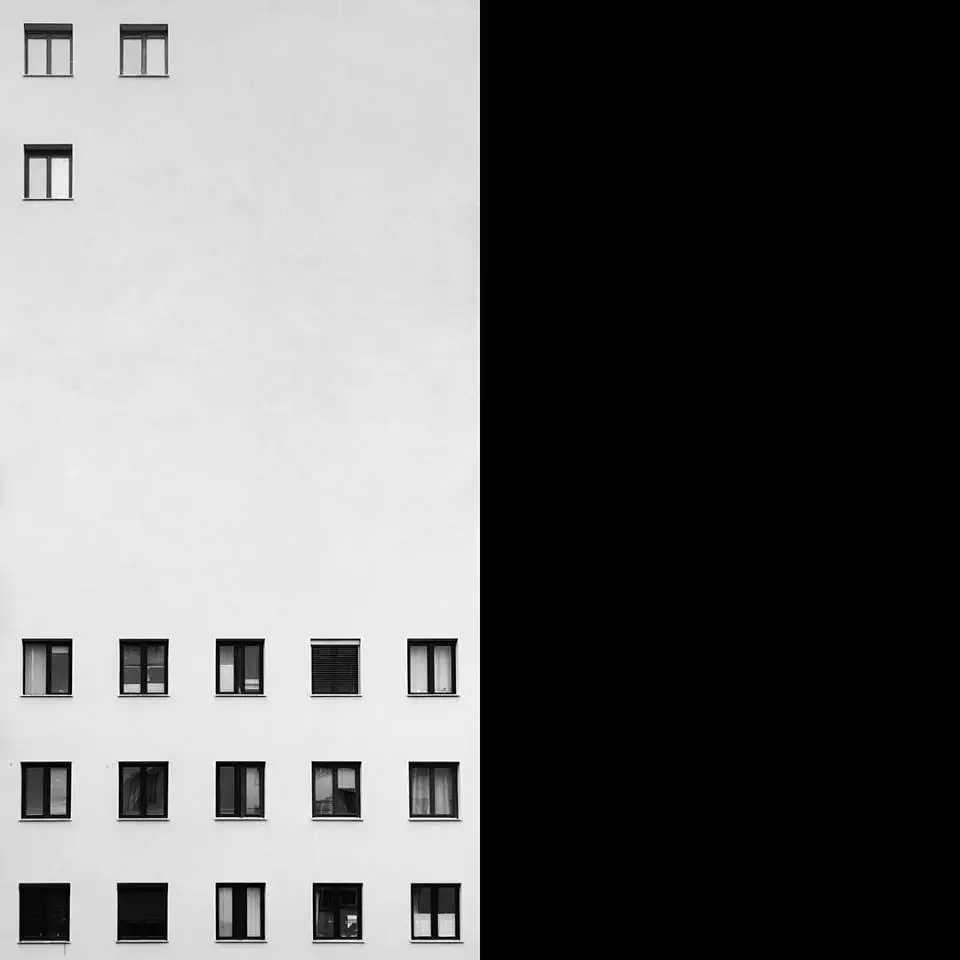
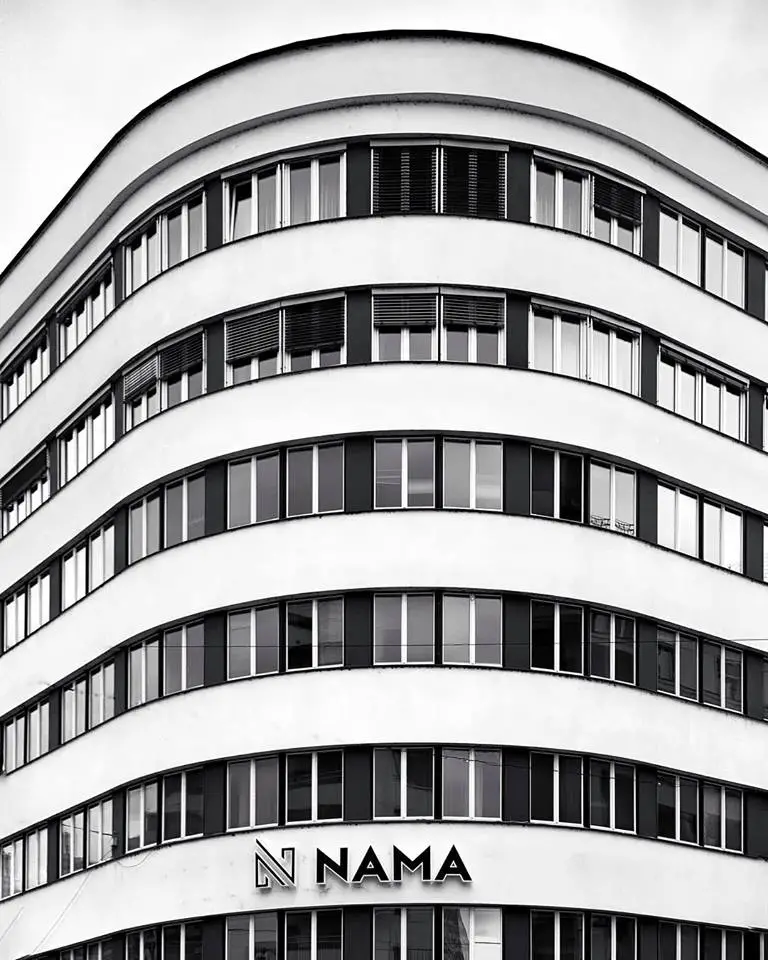
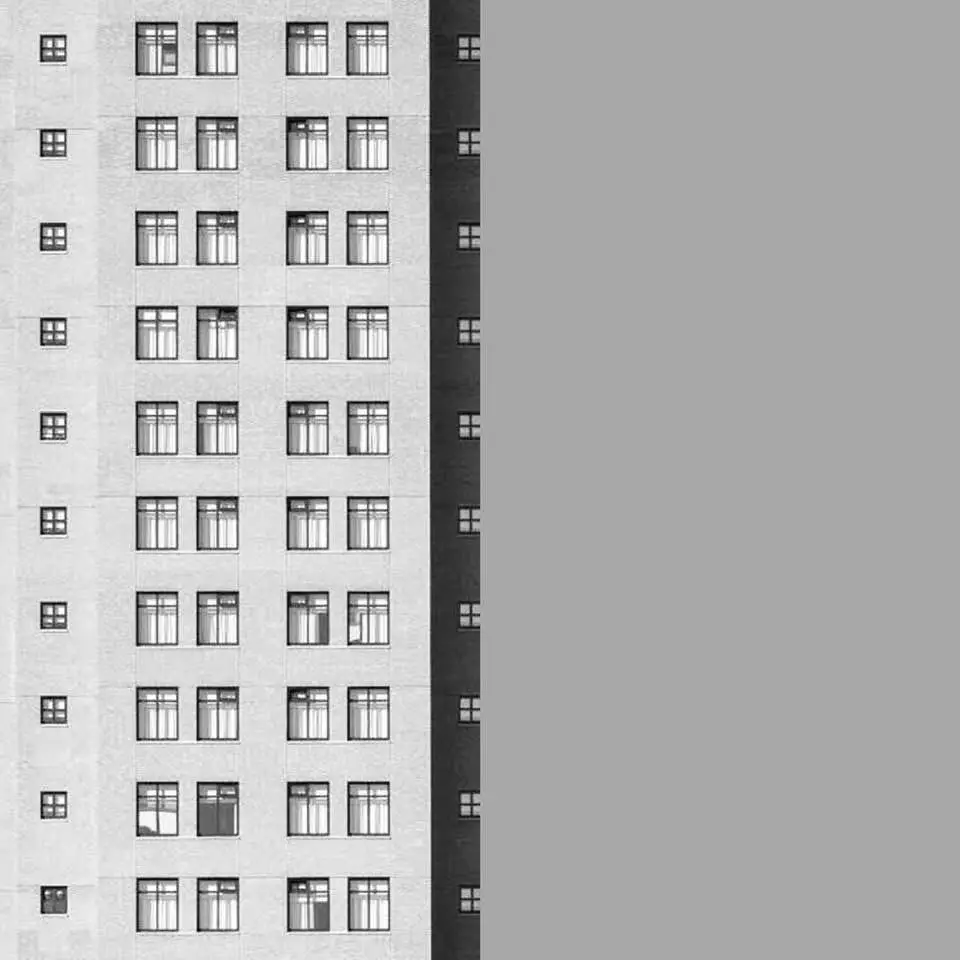
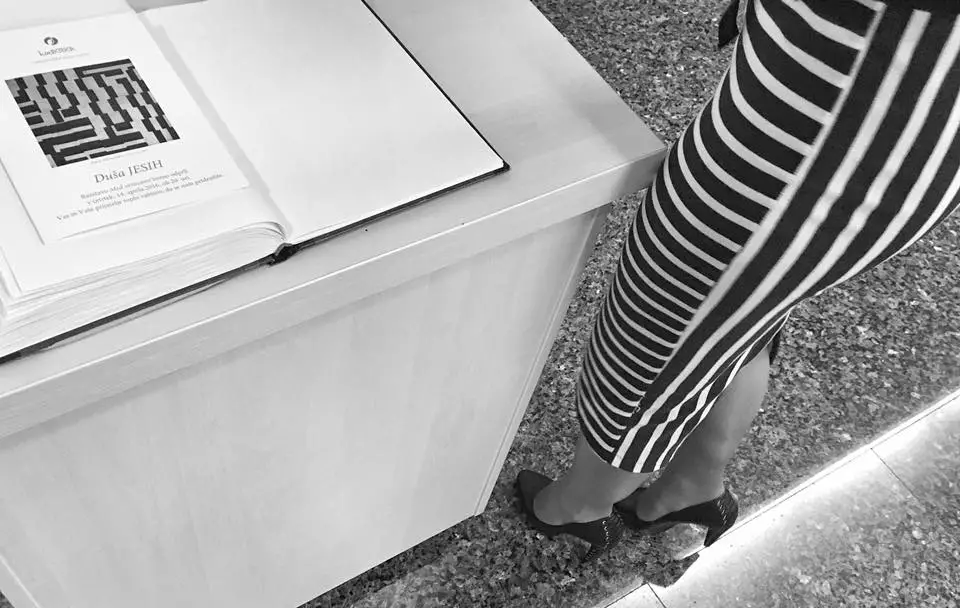
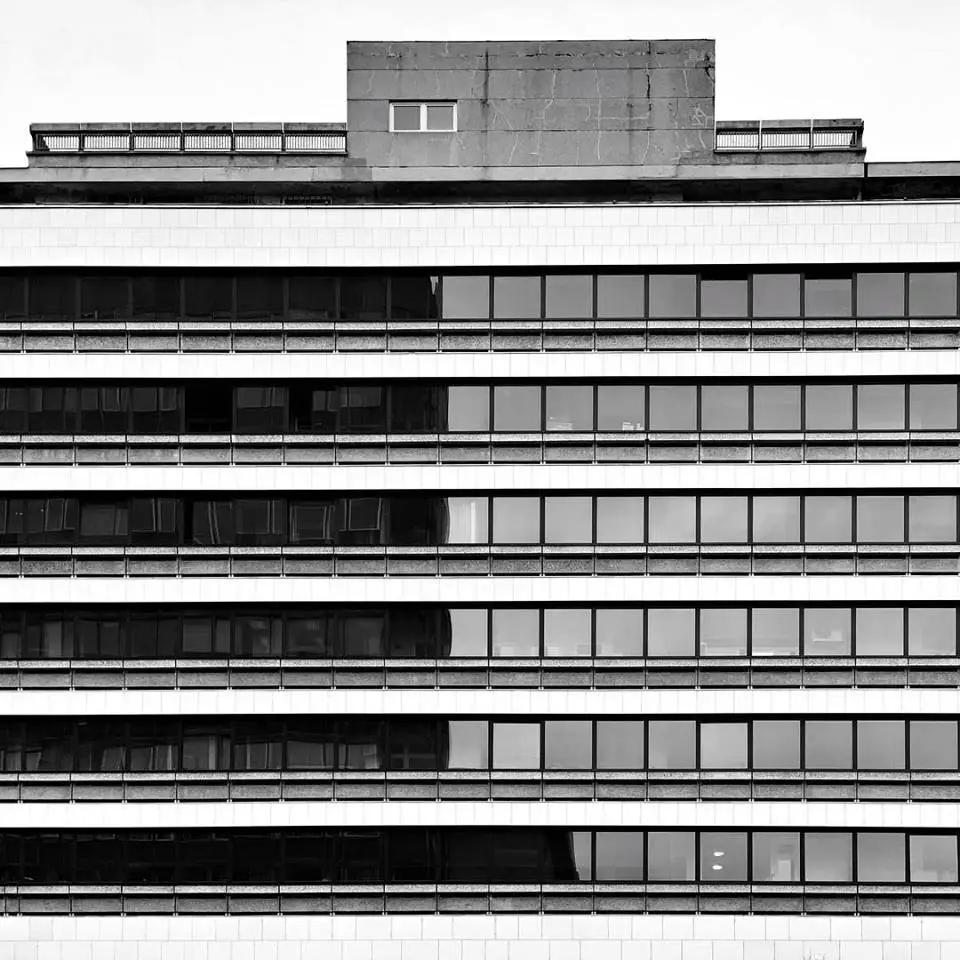
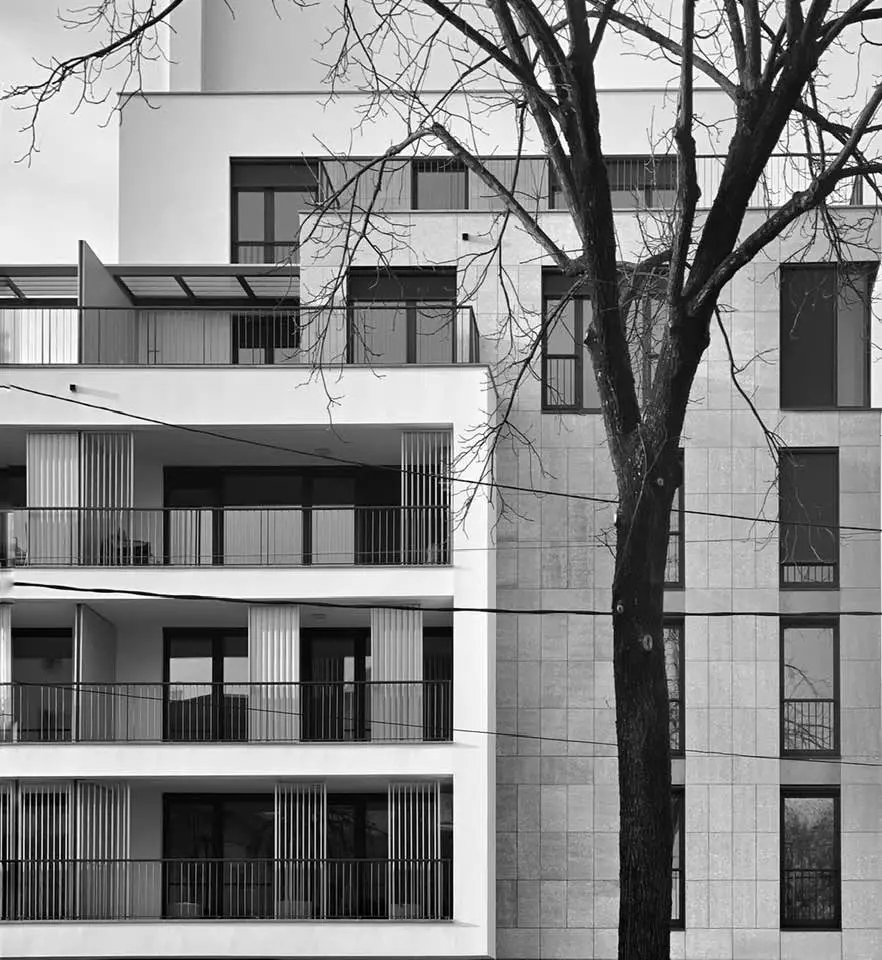
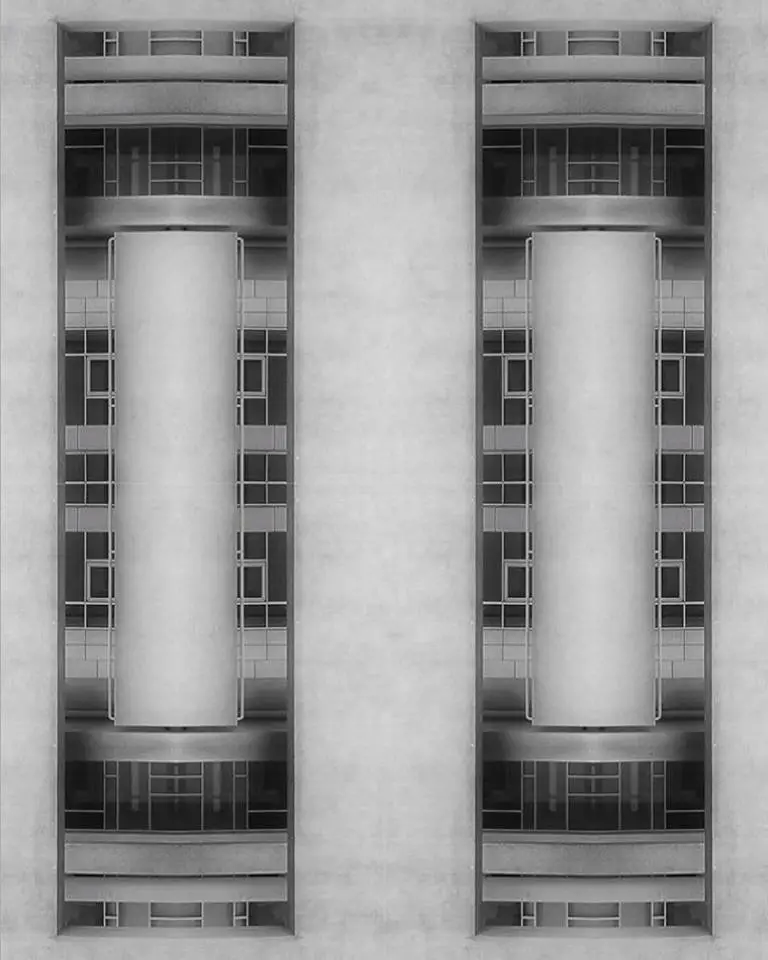
While Andjelić shows at various galleries, the best place to keep up with his work with minimal effort is Facebook, where you’ll find nice surprises, in black and white, on a regular basis.
You can spend years without going into a gallery or concert hall, but everyone has an intimate connection with the arts of architecture and fashion, and downtown Ljubljana is great place to observe these two expressions of creativity combined with design and engineering. While I’ve been struggling to keep up with the city’s stylish inhabitants, my guide to its built environment for the last few years has been a small, easy to carry book called Let’s See the City! Ljubljana: Architectural walks and tours, by the architects Špela Kuhar and Robert Potokar (2012, Piranesi Foundation) At a cost of just €18, it’s well worth a place on your shelf or in your bag if you live in the city, or are planning an extended trip and would like to learn more.
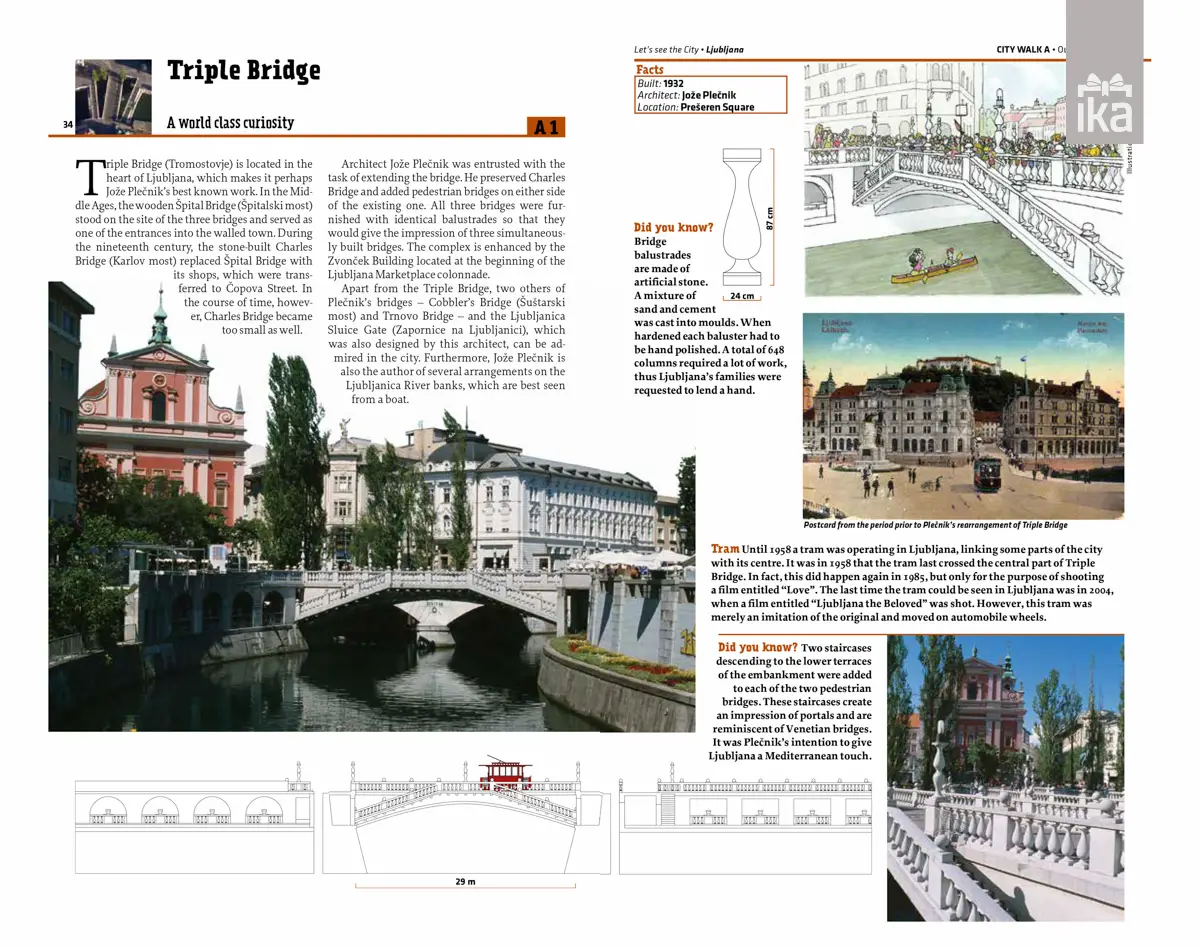
The book is laid out chronologically and as a series of six themed walks and five tours. It uses hundreds of photographs, maps, illustrations and plans to show the buildings, as well as the interiors of many places that are difficult to enter, thus putting the city in the palm of your hands. An attractive and well-designed book, it’s as easy to navigate as Ljubljana itself.
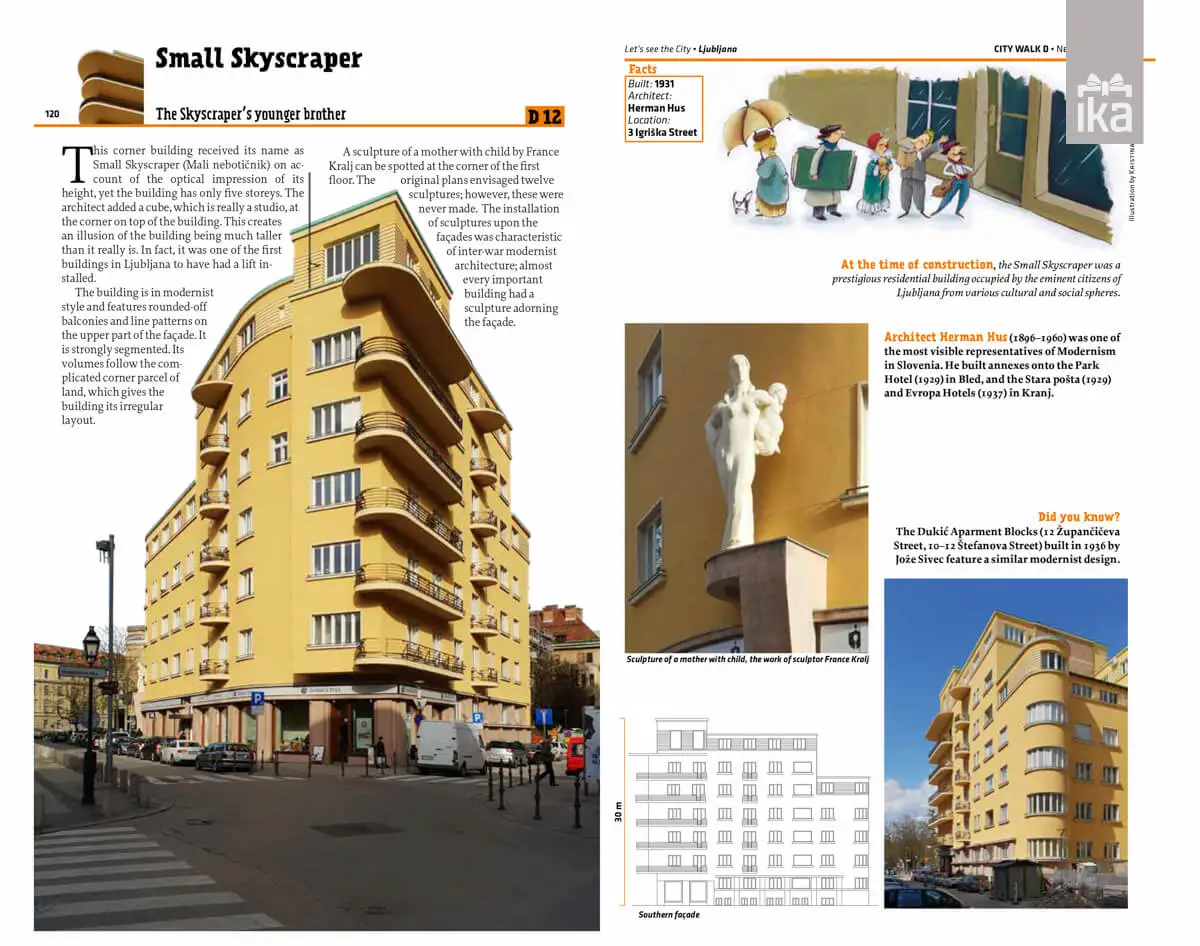
Plečnik is the big name when it comes to the city’s architects, but the book shows how there’s much more than his contributions to admire, leading you through the medieval Old Town and Secessionist/Art Nouveau quarters like Miklošičeva, with their colourful and decorative structures, on to post-WW2 Ljubljana and up to today, with the historical development of the city clearly laid out in ways that bring the streets to life. What’s more, unlike Vienna, London, Paris and so on the various buildings and views are relatively close to each other, and nearly all could be seen – from the outside, at least – in a leisurely walk over the course of day, with plenty of café or bar breaks to read up on and enjoy your surroundings.
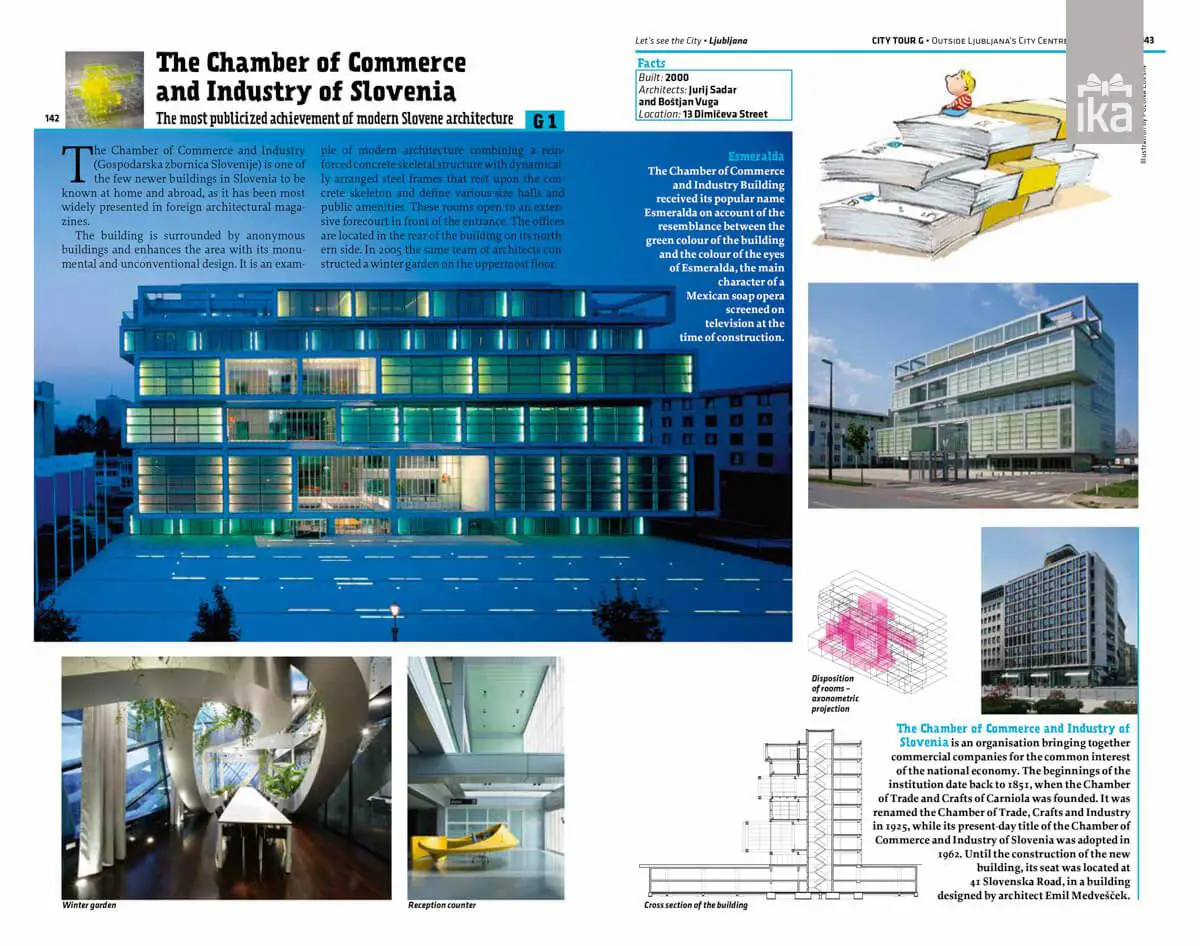
Take the time to do so and you’ll learn more about the buildings that give Ljubljana much of its character, and of where, for example, the medieval ends and the Baroque begins, how Mayor Hribar compares to Mayor Janković in terms of putting their mark on the city, and what the rivals and students of Plečnik got up to (and if you don’t know Ravnikar, you should, with a key example of his work shown here).
In short, this book contains a wealth of knowledge that’s sure to enrich your time spent in Ljubljana, and is one of the volumes in my apartment that I return to the most, and with most pleasure. You can find it in various bookstores, or order it direct from the authors here, while all our stories about architecture in Slovenia can be found here.
Related: 25 Things to Know about Ljubljana & What's on in Ljubljana this Week
STA, 4 January 2019 - Joc Pečečnik, the driving force behind the project to revamp a rundown Ljubljana sports stadium designed by Slovenia's best known architect Jože Plečnik, has not given up on the project just yet. After withdrawing a request for an environmental consent, he has filed for an integral construction permit, which is to speed up the project.
Although opponents of the project declared it dead and buried yesterday when it transpired that the investor, Pečečnik's Bežigrad Sports Park (BŠP), had withdrawn the request for the environmental consent, it seems that Pečečnik has only taken a new path to implement his plan.
Rather than pushing for the environmental consent as a precondition for a building permit, he has decided to request the integral construction permit under new legislation.
The Ministry of Environment and Spatial Planning confirmed for the STA that the BŠP had filed the request on 20 December in line with the amended construction legislation that stepped into force last year.
The procedure for integral construction permit combines the procedures of the environmental impact assessment and the issuing of the construction permit. The new legislation gives the ministry full power to decide on projects, completely leaving out the Environment Agency.
The procedure must also not take more than five months, not counting the period of public debate.
Neither Pečečnik nor the Slovenian Olympic Committee, which is involved in the project along with the Ljubljana municipality, would comment on the issue today.
The news first broke as the civil initiative that has been campaigning for the preservation of Plečnik's stadium in its original form announced on Thursday that the investor had withdrawn its request for the environmental consent, a precondition for a building permit.
The initiative welcomed the decision, labelling the move a sign that the project is now dead and buried.
According to the initiative, the investor too must have realised that the project was unacceptable because it would have caused environmental damage as well as destroy Plečnik's heritage. Pečečnik, the main investor, was unavailable for comment today.
But the head of the Olympic Committee, Bogdan Gabrovec, told the newspaper Delo last December that the renovation of the Plečnik stadium was a priority for him.
"It's a disgrace for all, for cultural heritage, the state and the city. The ten-year agony over construction plans, which are now in line with all environmental standards, has become harmful. This story must be solved one way or another in this term," he said in an interview.
If the project fell through, the Olympic Committee would lose some EUR 2.5m, which would plunge it into the red and that would be a big obstacle when applying to calls for applications, he said.
Ljubljana Mayor Zoran Janković told the press today he was convinced that Pečečnik was sticking with the project and that the civil initiative opposing the project had jumped to conclusions yesterday.
STA, 3 January 2019 - A project to revamp a rundown sports stadium in Ljubljana (Centralni stadion Bežigrad) that was designed by Slovenia's best known architect Jože Plečnik appears to be dead after the investor pulled out following more than a decade of tug-of-war with the opponents of the project.
The Bežigrad Sports Park (BŠP) company, the special purpose vehicle established by one of the wealthiest Slovenians, Joc Pečečnik, in cooperation with the Ljubljana city authorities and the Slovenian Olympic Committee, has withdrawn its request for the environmental consent for the renovation, the Environment Agency has confirmed for the STA.
According to the Environment Agency, the investor requested to be removed from procedure on 21 December. The procedure was stopped on 28 December giving all the parties 15 days to appeal the decision, the agency added.
The news first broke as the civil initiative that has been campaigning for the preservation of Plečnik's stadium in its original form announced on Thursday that the investor had withdrawn its request for the environmental consent, a precondition for a building permit.
The initiative welcomed the decision, labelling the move a sign that the project is now dead and buried.
According to the initiative, the investor too must have realised that the project was unacceptable because it would have caused environmental damage as well as destroy Plečnik's heritage. Pečečnik, the main investor, was unavailable for comment today.
The group hopes this will pave the way for a new solution that would restore the stadium to its original form, so it could be used for recreational sports and various events.
The stadium in the Ljubljana Bežigrad borough was designed by Jože Plečnik (1872-1957) in 1923. Built in several phases, its covered landmark VIP box was not added until 1935.
It was closed down for renovation in 2008, about the same time when the Stožice sports complex, also featuring a new stadium, was built on the outskirts of Ljubljana.
The investors had to fight off opposition from the get go, with the latest blow coming in late 2017, when the Environment Ministry again retracted the environmental consent, previously granted by the Environment Agency, upon an appeal by the civil initiative.
STA, 15 October 2018 - A Slovenian architect who moved to Argentina in 1924 has left an important mark on the city that currently hosts the Summer Youth Olympic Games. Viktor Sulčič is one of the designers of the La Bombonera football stadium in Buenos Aires and he also came up with the nickname for the home of the popular Boca Juniors club.
Ljubljana is known for many things, but the focus of this post is part of its Art Nouveau / Secessionist architecture. The most famous examples of which, or at least the most photographed, are to be found on Miklošičeva ulica, including the Emporium building on the edge of Prešeren Square, Grand Union Hotel, and the red building opposite, known as Vurnik House or the Cooperative Business Bank building.
Slovenia is famed for its natural beauty, but the built environment also has much to enjoy. This week’s photo is Lace Apartments, a complex in Nova Gorica that was designed by Ofis Architects, and more specifically the team of Rok Oman, Špela Videčnik, Nejc Batistic, Martina Lipicer, Andrej Gregoric, and Katja Aljaz.
New York’s Museum of Modern Art (MoMA) is currently staging a major show on Yugoslav architecture, (Toward a Concrete Utopia: Architecture in Yugoslavia, 1948–1980), but those interested in monumental works of brutalism don’t need to cross the Atlantic to look at photographs and models, as they can explore the real thing in the heart of Ljubljana.


